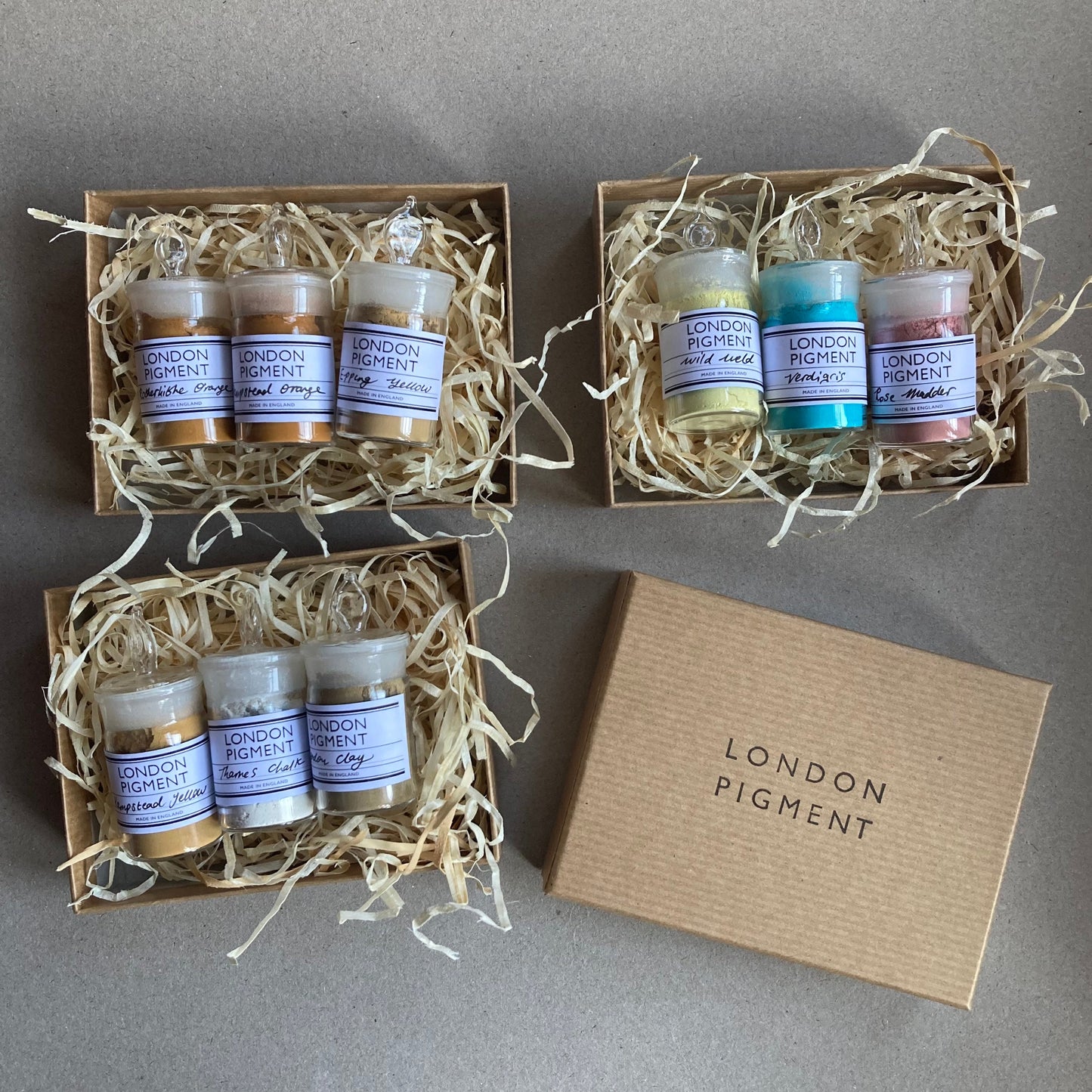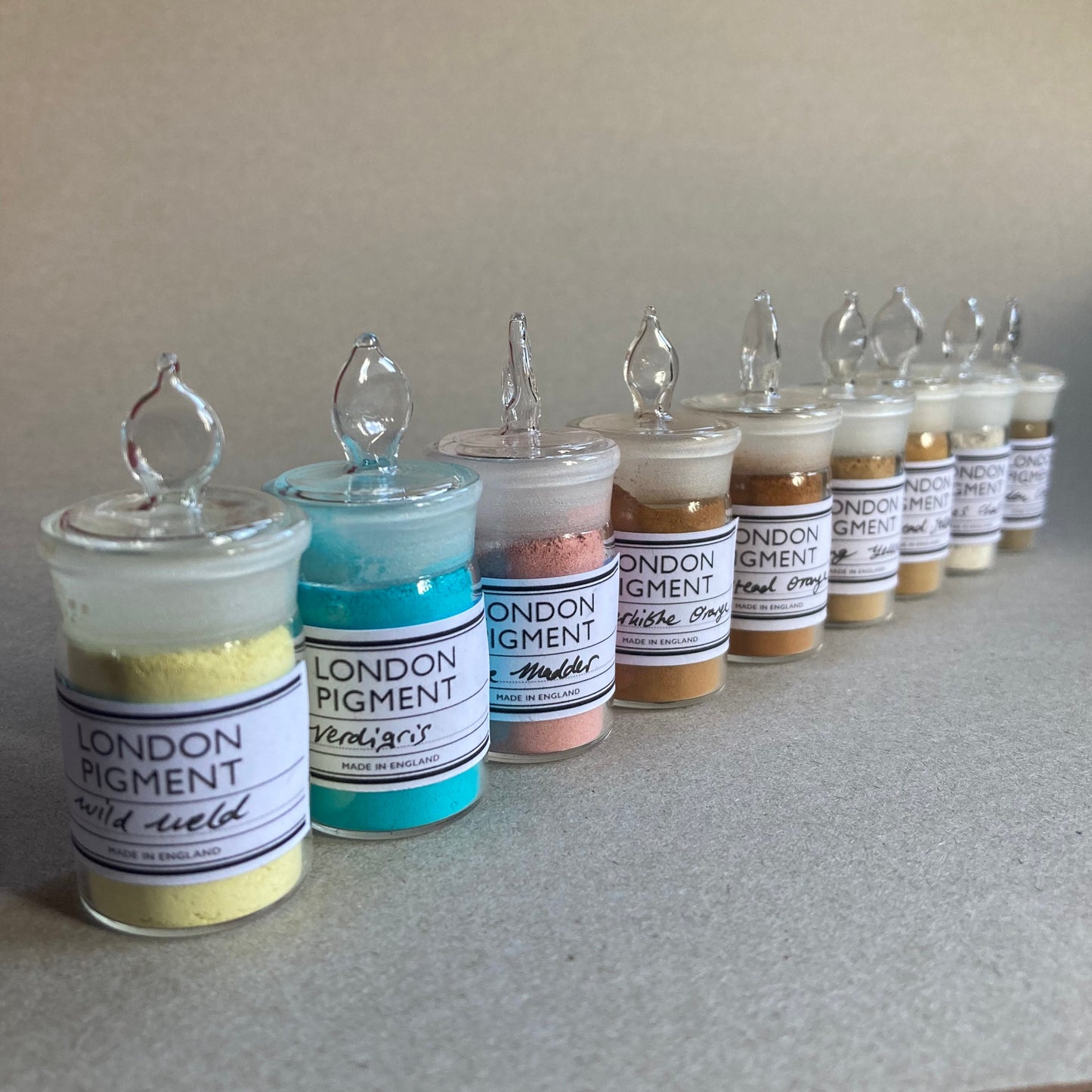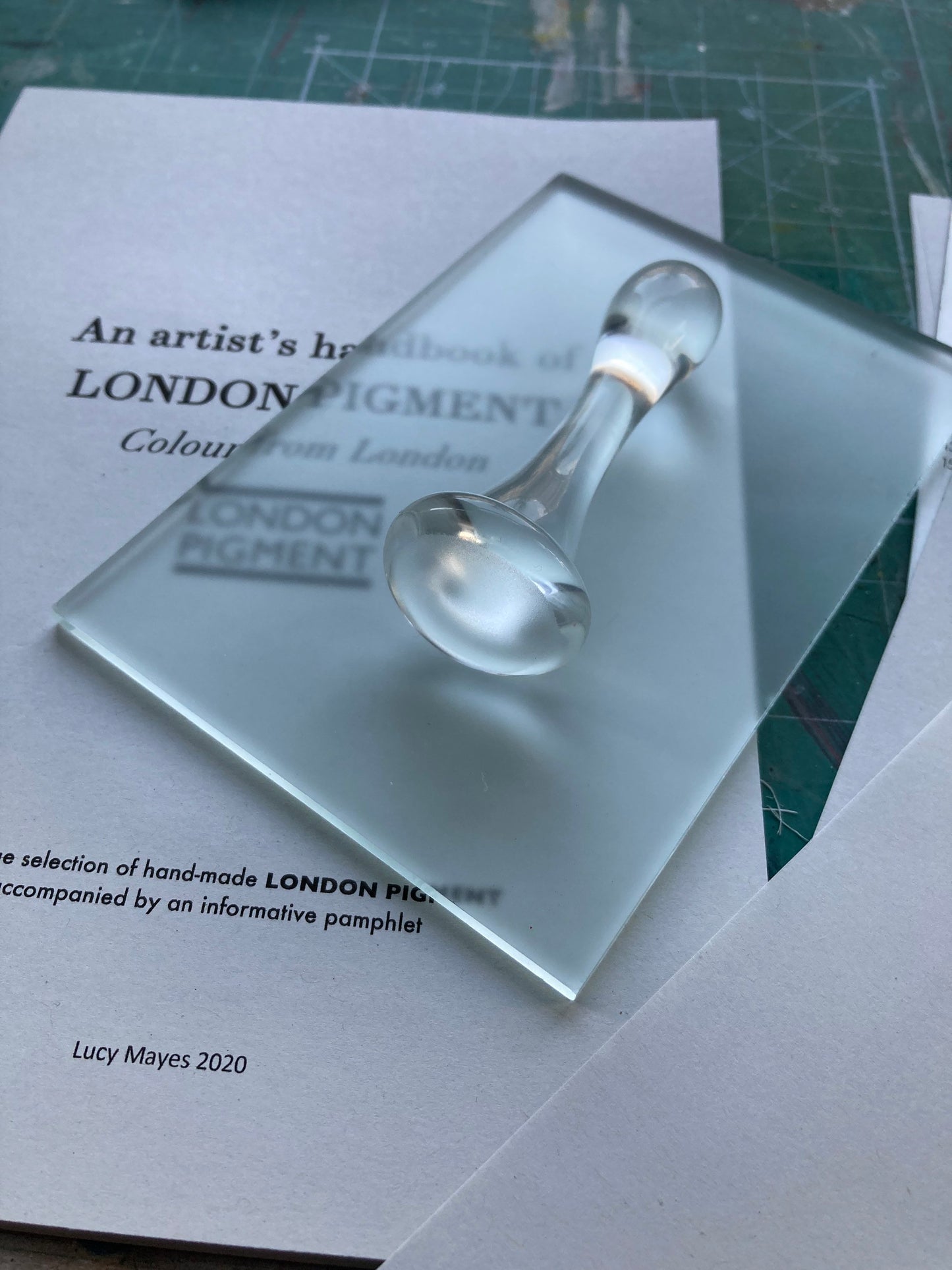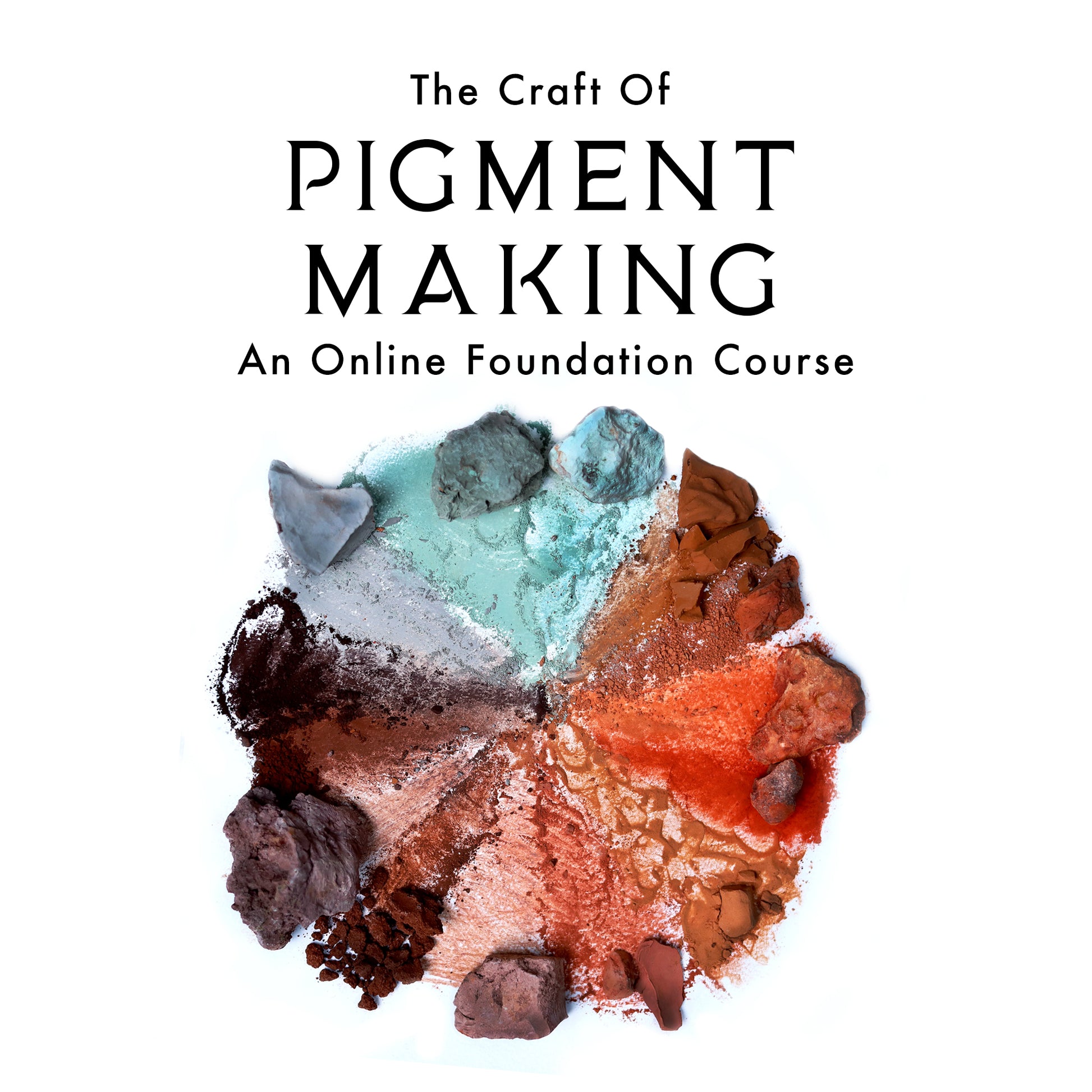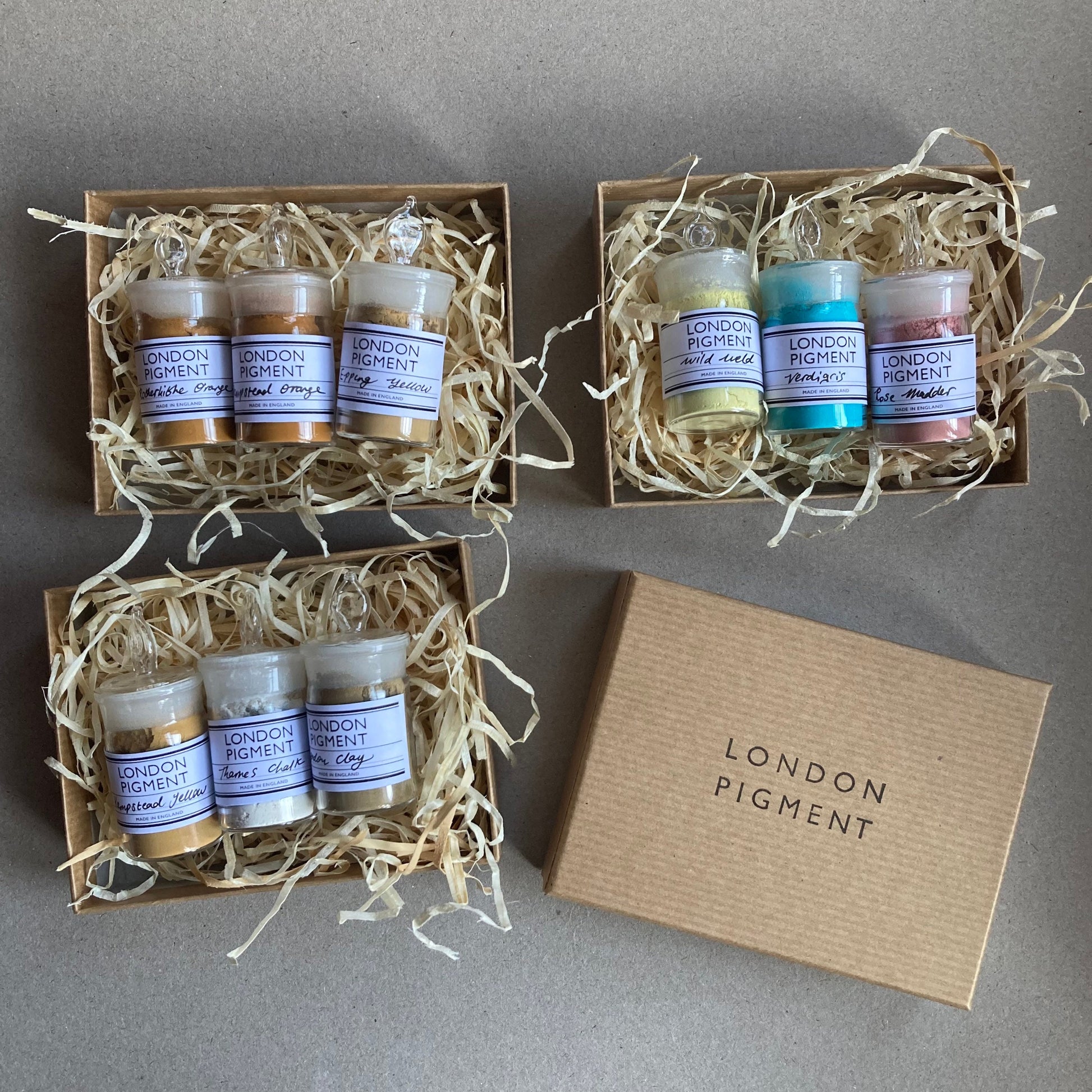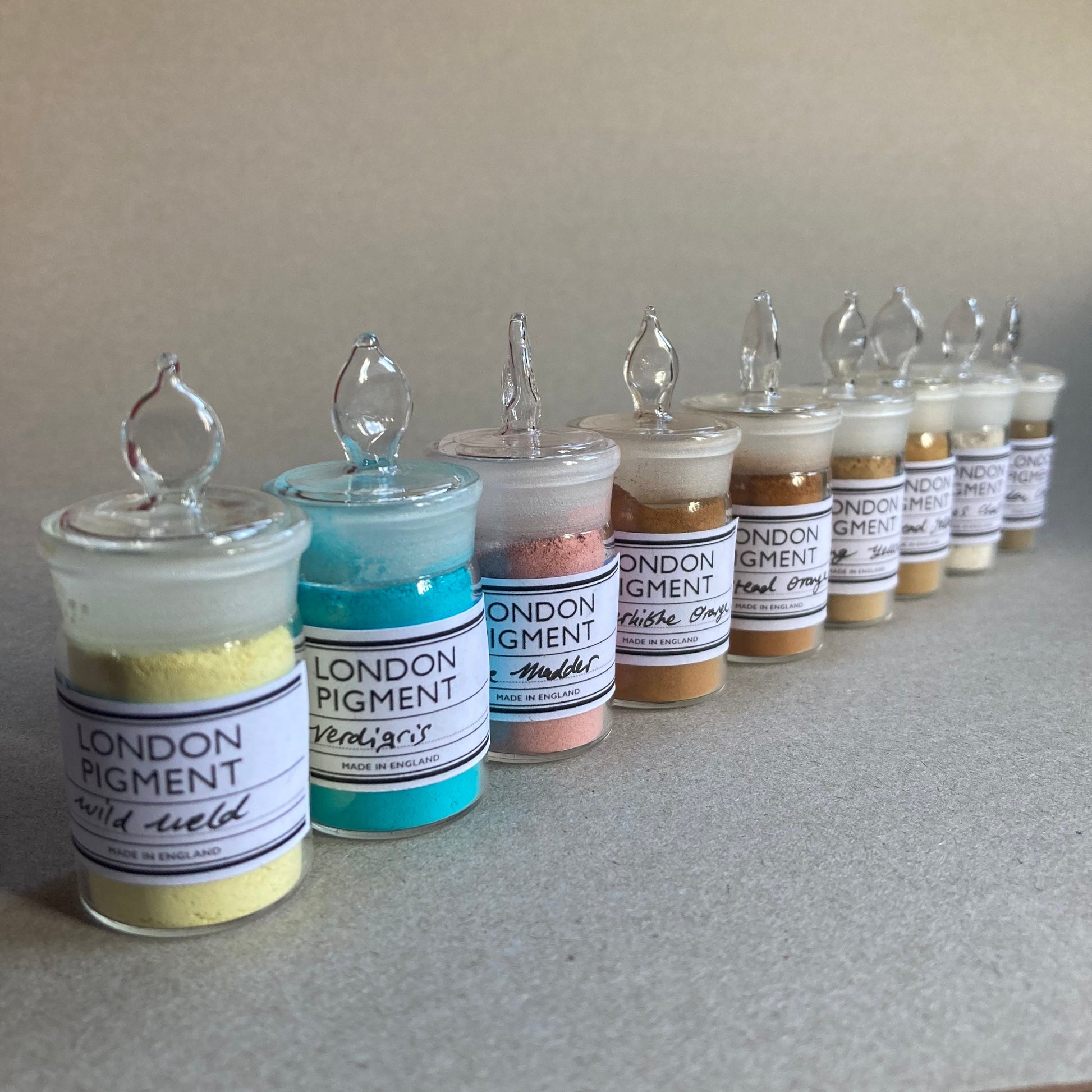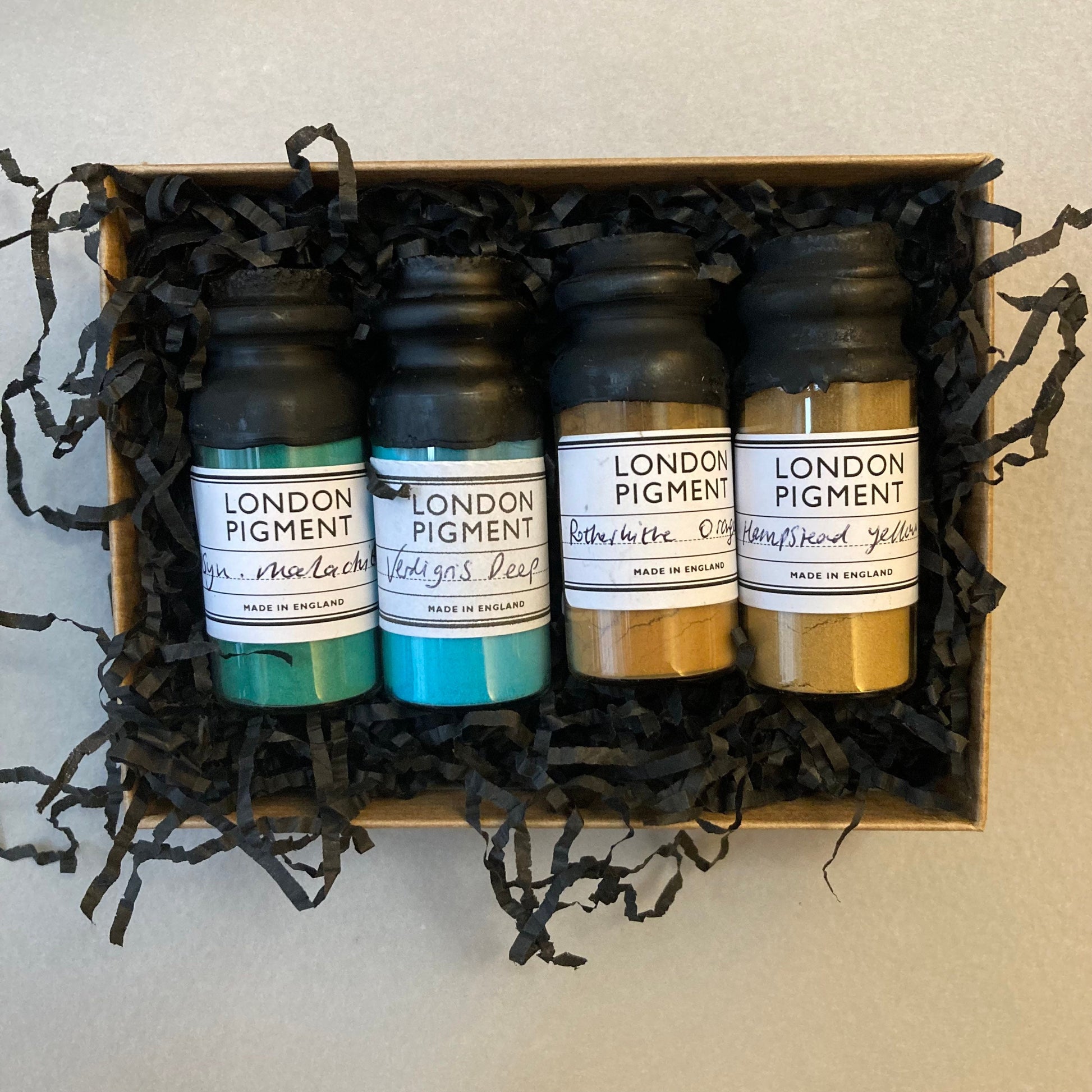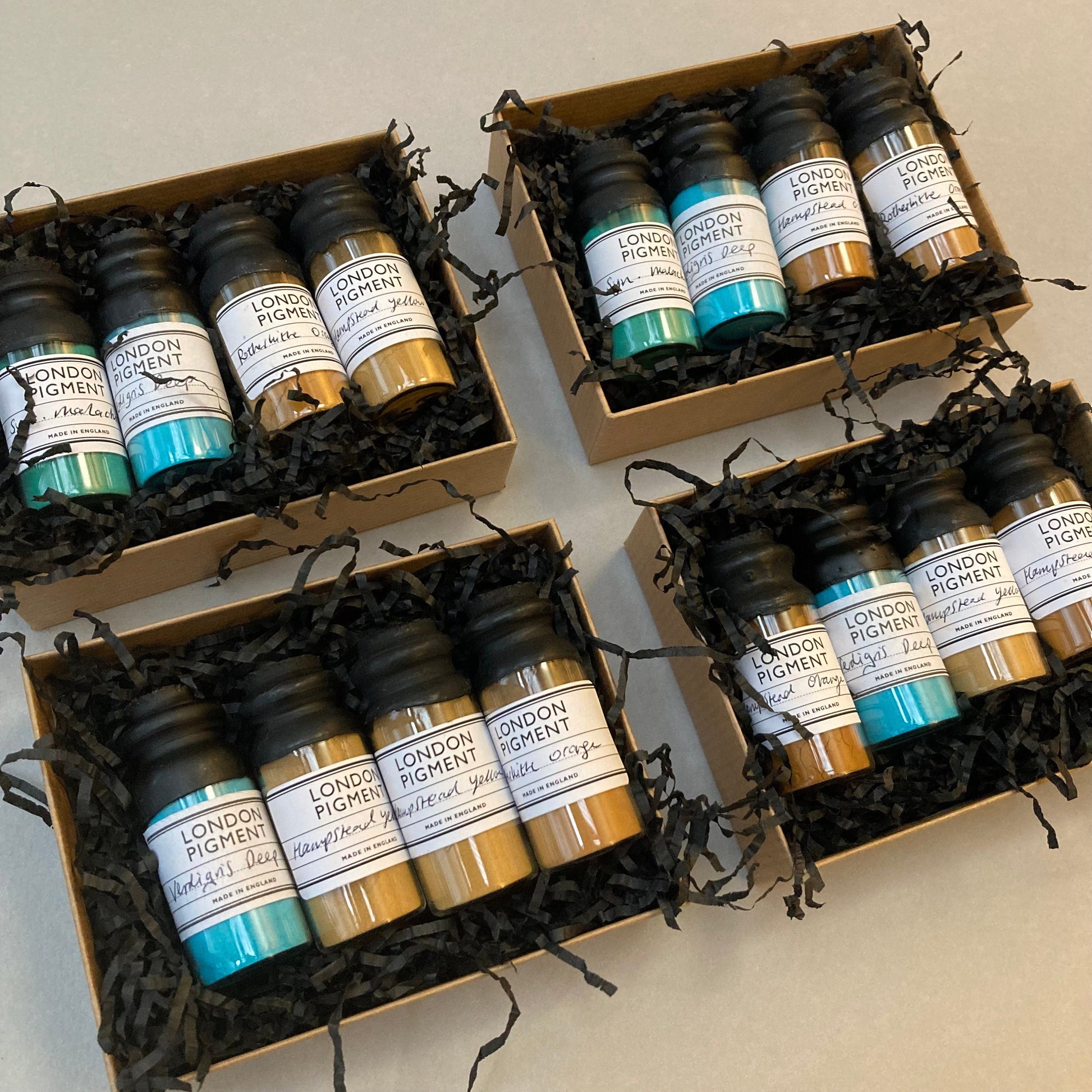LONDON PIGMENT
The Craft of Pigment Making Online Foundation Course
Couldn't load pickup availability
Spread the cost with Klarna - now available at checkout
Introduction
Master the craft of sustainable pigment-making in this watch-on-demand course. Learn to create high-quality paint from scratch using natural pigments, organic binders, and eco-friendly additives sourced from your surroundings.
Ideal for creatives looking to deepen their Earth conscious practices, this course guides you in transforming local materials and waste into vibrant, usable pigments and paints. Explore designing custom colour palettes, experimenting with colour and pigment properties, and applying these techniques to a wide range of projects—from personal art to large-scale designs—while keeping environmental impact at the forefront.
London Pigment founder and experienced lecturer in the field of pigments (V&A London, TATE, British Museum), will guide you through the physical & chemical processes of pigment making whilst instilling the material with her unique outlook on the subject.
Who is this course for?
This course is ideal for anyone passionate about colour and sustainable practice, from artists and architects to designers in fields like fashion, interior, textile, and beyond. Whether you’re creating bespoke, eco-friendly finishes for large-scale projects or adding sustainability to a personal practice, these versatile techniques are applicable across a range of disciplines. Participants will gain actionable methodologies for a wide range of practices, inspiring the creation of authentic colour palettes, including within the digital realm.
Whatever your creative field this course will inspire you to reconsider your use of colour with fresh intention, creativity, and respect for the environment.
Course Outcomes
Throughout the course, you’ll gain hands-on skills to design custom, authentic colour palettes for a variety of applications. While covering core historical pigment and binder categories, we'll also explore creating dynamic effects and captivating finishes with local, found materials.
Upon completion, you'll be able to create sustainable paint, develop environmentally conscious palettes, and implement this knowledge across creative and professional contexts:
- Pigment Creation: Learn to source and process natural pigments from eco-conscious sources, including waste streams like plant matter, urban waste, and local clays.
- Binder and Additive Know-How: Discover how to create organic binders and select safe, eco-friendly additives to enhance the longevity and quality of your paints.
- Multi-Disciplinary Applications: Gain methodologies for applying these techniques across architecture, interior/exterior design, textiles, fashion, and personal projects.
Course Outline:
Chapter 1: The Foundation of the Craft of Pigment Making
-
- Lesson 1: An introduction to Pigment Making
Introducing pigment theory and classifications. The lesson covers what a pigment is, provides an overview of pigment types, explains the differences between pigments and dyes (with diagrams), and details pigment classifications (natural vs. synthetic, inorganic/synthetic) with examples.
- Lesson 2: Safety Measures
How to adequately protect yourself whilst creating handmade pigments. Although the materials that we will be using can be described as mostly non-toxic, some of the chemicals are of a stronger pH that you would find in your kitchen cupboard and so we need to exercise caution around them, alongside the danger of airborne particulates and source materials whose chemical makeup isn’t completely known, such as found clays.
- Lesson 3: Equipment
Learn about equipment and sundries useful for the studio. In this video, Lucy goes through a selection of tools that could inspire the different applications with our hand made pigments & dyes. Although not all are necessary, they are worth knowing about.
- Lesson 1: An introduction to Pigment Making
-
Chapter 2: The Recipes - Making Pigment
- Lesson 1: Making Lake Pigments: Shades of Madder Lake
Learn the principles behind converting a dye into an insoluble pigment. Using madder roots as our raw dyestuff we will apply our standard laking recipe to create a bright red pigment, also using a special Victorian recipe to create luminous pink shades.
- Lesson 2: The World of Verdigris Pigments
Learn about the principles behind creating copper based corrosion pigments. We learn about the parameters and variables that can be manipulated to create shades of green varying from electric blue to grassy green. - Lesson 3: Earth Pigments Pt.1: Processing Earth Pigments
Learn to process found raw materials into fine, artist-grade earth pigments, focusing on iron oxide pigments, exploring their makeup and variability. We'll cover the processes of sourcing, crushing, grinding, sieving, washing, and levigation. You'll learn clay foraging ethics, health & safety, and methodology; processing various materials (clays, rocks, etc.); how to create different pigments from one source (levigation); and pigment testing.
- Lesson 4: Earth Pigments Part 2: Thermally Transforming Ochre
Learn how to transform artist-grade iron oxide (ochre) into different shades using heat and oxygen. Explore the phases, and physical & chemical changes iron undergoes during burning.
- Lesson 1: Making Lake Pigments: Shades of Madder Lake
-
Chapter 3: The Recipes - Making Paint
- Lesson 1: Making Paint
Learn to make professional watercolour paints by creating a binder solution and mixing it with pigments and additives. Lucy shares her tips for knowing when your paint is ‘done’ and optimal paint ratios. You'll learn the mulling technique, understand paint formation, and get an overview of additives.
- Lesson 1: Making Paint
-
Chapter 4: The Recipes - Making Ink
- Lesson 1: Making Gallotannin Pigments & Ink
Learn to create dye- and pigment-based inks. Explore extracting dye compounds from tannin sources (local flora) using heat and fermentation. Create dye-based inks with gum arabic, or a black pigment ink by adding iron. We'll cover the chemistry of dyes and pigments, different ink types, and pH modifiers.
- Lesson 1: Making Gallotannin Pigments & Ink
Each module contains:
- Pre-recorded lessons with specially designed worksheets
- PDF of recipes with diagrams and flow charts of methodologies covered
- Reading & suppliers list
Purchase Options:
-
Online Course Only
-
Online Course + Paint Making Set Get started with the complete and essential range of tools to accompany the course content, perfect for use at home or in the studio. Includes miniature glass paint muller & grinding plate; set of 4 x pigments in 20 ml glass bottles sealed with wax; gum Arabic binder to make watercolour paint; printed watercolour paint recipe.
-
Online Course + Deluxe Paint Making Set Everything in the paint making set, this time with 9 pigments, each in beautiful and unique handblown glass bottles, specifically designed to inspire colour combinations or adorn your studio as a rare collector’s item.
Please note: the pigments on offer in the sets are made in incredibly small batches and so colours will vary. Each set will have a unique & wide variety of colours & particle sizes.
Materials
Materials
Shipping & Returns
Shipping & Returns
Dimensions
Dimensions
Care Instructions
Care Instructions

